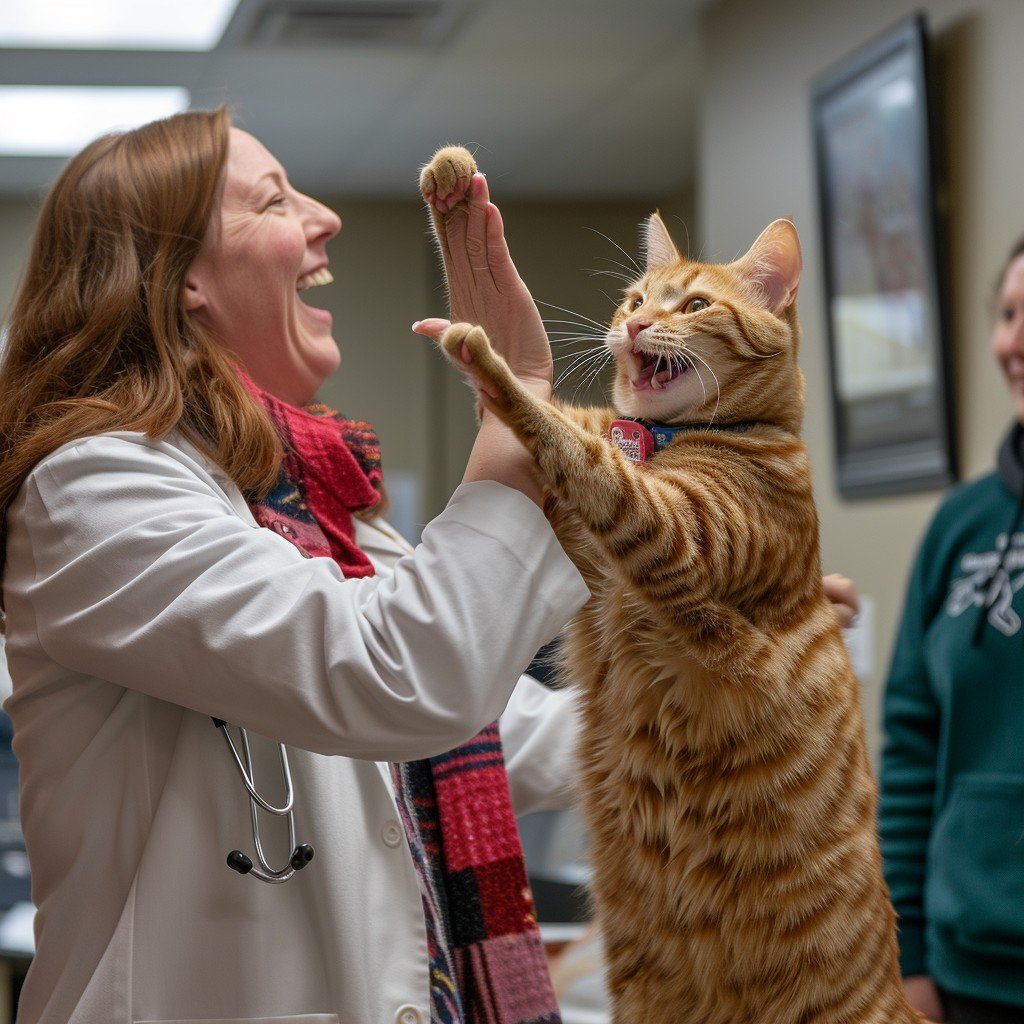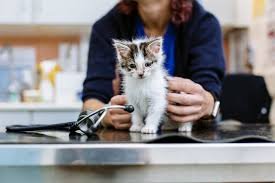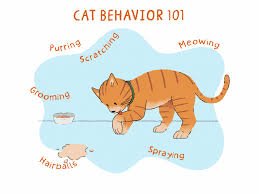Beginner’s Guide on How to Take Care of a cat. Owning a pet is one of the most fulfilling activities one can undertake since it adds happiness into your life. When choosing your new companion, it does not have to be a dog or a cat; it can be a puppy, a kitten, or any other creature, and you must know what to expect.
Beginner’s Guide on How to Take Care of a cat
Beginner’s Guide on How to Take Care of a cat. The following guide will educate you on the basic pet care that you ought to employ whenever you decide that you want a pet.

Choosing the Right Pet
Beginner’s Guide on How to Take Care of a Pet. When you decide to adopt a pet, you should make sure you adopt the right kind that will suit you. Choosing the right pet can be useful, while choosing the wrong one can be a disaster for you and the animal. It may take some time to study the differences between various breeds and species to get the best results. Beginner’s Guide on How to Take Care of a cat. Consider factors such as:
Activity Level: Of course, some animals need active and excessive playing compared to the others. For example, energetic four-and-a half-legged friends such as the border collie must be taken for walks and have playtime often, but cats, for example, love to laze around most parts of the day. Find out how many minutes a day you will be able to spend training your pet.
Space: First of all, be sure that there is enough space for a pet in your house. Some breeds of dog might require space to exercise, say in a compound, while others in a small cage, hamsters, or fish don’t require much space. Take into account the spatial situation of your home and how much space you can allow for your pet to run and fester.
Time Commitment: This is because different pets are expected to be given different amounts of time. Dogs require to be with someone and to have attention, while other little creatures, such as fish, need less manipulation. Consider how many hours a day you’re willing to spend with your new pet and how your new pet will fit into your lifestyle.
Allergies: So in case there is an allergy to any family member, then always choose hypoallergenic breeds. Certain breeds of dogs—Poodles and Bichon Frises, to name a few—shred minute amounts of dander, which makes the dogs excellent for people who have allergies.
Beginner’s Guide on How to Take Care of a cat. It is therefore advisable to spend some time selecting your pet since this prepares you for the kind of relationship you are going to have with the animal.
Preparing Your Home
Beginner’s Guide on How to Take Care of a cat. Having made your choice of the kind of pet you want, let’s see how you can have your house ready and prepared for it. To begin with, sexual coercion and prevention is a major issue of concern, and thus making a friendly environment is important. Here are some essential steps to take:
Pet-proof Your Space: Any products that pose danger to a pet—chemicals, small objects, wires, etc.—must be taken away from reach. Find a place for toxic plants and make sure that nothing that can fall is stored above the reach of children.
Create a Cozy Area: Choose an area for your pet to sleep and rest. \ lineitem Several designs are available for pet beds: Bed, blanket, and toys are necessary to have for them to feel at home when they get to Florida. It is also important to ensure that this area is not so much accessed by many people as possible.
Establish a Routine: Pets thrive on consistency. This creates a stable schedule to guide your new friend through when to eat, take a walk, and play. The daily schedule is soothing and will help your pet feel as comfortable as possible.
Gather Supplies: As early as now, put everything that you need to prepare for the pet on a single list and have it brought in when the pet arrives. This is food and water bowls, a collar with leash, toys, grooming items such as shampoos, brushes, and nail clippers, and a litter box or kennel for dogs or cages for other pets.
Basic Pet Care Tips
Beginner’s Guide on How to Take Care of a cat. Arguably, every pet owner is concerned with the well-being of his or her pet, especially if he or she is a first-time pet owner. Here are some fundamental pet care tips:
1. Nutrition Matters
Beginner’s Guide on How to Take Care of a cat. It is vital to ensure that your pet is fed on a balanced diet only. You can consult your veterinarian about which type of food is most suitable for the age, size, and type of your pet. Pay attention to the following:
Fresh Water: Make sure water is available and clean always; probably give new water every day. It is very important that animals are well hydrated. For dogs, theplement a water bowl that is crazy safe and non-spill; for cats, some pet water fountains are preferred.
Quality Food: Select pet food from a good standard and with nutritional standards set for a pet at a particular life cycle, whether a puppy, an adult, or a senior. When it comes to selection, always go for brands that have meat as the first item on the ingredient list while checking for stuff like bread and other grains filling the lists.
Avoid Human Foods: There are many foods that are poisonous for pets. It also is best not to feed them chocolate, grapes, raisins, onions, and garlic. Inform yourself on a list of safe and unsafe foods to reduce cases of poisoning.
Monitor Weight: Be sure to monitor your pet’s weight and body condition. Health complications as a result of obesity include diabetes and joint complications. Ask your vet for the correct weight for your pet and how much it should gain or lose per single feeding.
2. Regular vet visits
Beginner’s Guide on How to Take Care of a Pet. This is one reason that it gives much importance to schedule the check-ups with the veterinarian for pets. They also allow a patient to be checked regularly and any health complications be detected early. Here’s what to consider:
Vaccinations: Take your pet regularly for a vaccination to prevent illnesses that are normal amongst pets. Talk to your vet regarding a vaccination schedule.
Preventive Care: Preventive measures that should be given frequently include flea, tick, and heartworm. For the best prevention treatments, you should consult your vet for your pet’s specific needs.
Dental Care: Periodontal health is a vital but least regarded aspect in a person’s life. The fact about dental checkups and cleaning is that it can reduce the risk of dental diseases. Include dental treats and toys to check the dental health of your pet and to reduce cases of gum diseases.
3. Grooming Essentials
Beginner’s Guide on How to Take Care of a cat. Grooming prevents tangling of hair, skin diseases, and all other related problems that affect your pet. Depending on the type of pet, grooming may include:
Bathing: Everybody knows that depending on the breed and features of fur, some pets require frequent washing. Locate where to get detailed information about the required grooming of your breed. In general, it is thought that dogs need to be bathed roughly once every three months, while cats are inclined to groom themselves.
Brushing: Brushing also prevents the development of tangles in long-haired animals and also minimizes hairball shedding. It is also a good time and moment to look for any skin problems like rashes or parasites.
Nail Trimming: It is also important to trim your pet’s nails so as to prevent your pet from getting hurt. If you are still unclear on how to trim nails safely, you can consult your vet or go to a groomer for assistance.
- Training and socialization
Beginner’s Guide on How to Take Care of a Pet. Pet training is essential for the health of your pet and for your own convenience. First, make sure that your child understands basic instructions such as sit, stay, and come. You may also want to enroll in a training class in order for training to be more structured. Here are some tips:
Positive Reinforcement: This is best done by rewarding a patient with treats, commendations, and caresses after the subject exhibits good behavior. Do not use forceful training techniques, as they are inimical to a good relationship between you and your pet.
Consistency: Always be clear and united in what you want from your students when it comes to commands and rules. Meanwhile, different members of the household should use the same cues so that no confusion is created.
Socialization: Socialize your pet by taking it through different places and interacting with different people and other animals. Cooperating with other people decreases stress and allows managing behavior in different circumstances.
Why Your Pet Acts That Way
Beginner’s Guide on How to Take Care of a Pet. But to those who own a pet for the first time, it can be overwhelming as well as enriching your understanding of your pet’s behavior, which will enhance your companionship level. Here are some common signs and what they mean:
Tail Wagging: This may be true in dogs, thereby showing signs of happiness or excitement. A slow wag in the cats can be interpreted to mean that the cat is in the playful mood slightly annoyed. Learn to listen to the body language to be informed of your pet’s mood.
Purring: Cats pant in many different situations the most common being when they are happy or when they are in pain. If you hear your cat purring but she is showing signs of stress, you should seek professional help from your vet.
Vocalizations: Some pets and almost all mammals use some forms of vocal communication. Dogs especially make barking sounds in cases where it is simple excitement or to give out a warning. Cats meow to get attention. Identify what various sounds say in order to act correctly.
Body Language: Take note of how your pet sits, how it walks, or even how it plays. A tense dog will have its ears flat on the head or the tail between its legs, while a contented cat will be lying on its belly and pawing at the floor.
Enjoying Quality Time
Beginner’s Guide on How to Take Care of a Pet. It enhances the bond/confidence shared between the two of you and, more importantly, has health benefits for your pet. Engage in activities that you both enjoy, such as:
Daily Walks: Daily walks are good for dogs and help them get the exercise and the mental exercise that they usually need. It is also a time for both of you to have quality time together and discover new areas of your community.
Interactive Playtime: Use toys to encourage play. Cats like laser pointers, feather wands, and crinkle balls, and dogs like fetch toys or tug and pull. Play is necessary to prevent the pet from getting bored, and not to mention your pet will be able to exercise while playing.
Cuddling and Affection: Sometimes, you just may pet your pet simply out of affection, which may be soothing to the animal and increase companionship. Cuddle and spend some quality time with them; you can help them understand you are harmless and you care for them.
Training Sessions: Make it an agenda to practice for ten minutes a day. Training should not be stressful, and finding new tricks to teach your pet is very enjoyable. It also assists in the development of the mind of your pet.
Conclusion
Beginner’s Guide on How to Take Care of a Pet. Getting a pet for the first time is one of the most fulfilling journeys, as one is able to share his or her life with a pet, plus the pet complicates the owner’s life now and then. With these basic pet care guidelines you have to adhere to, you have your pet’s health and happiness all figured out. Please don’t forget patience and consistency are the words when you are nurturing the loving relationship with your pet.
Beginner’s Guide on How to Take Care of a Pet. Gaining the trust and respect of your pet will only take time, effort, and patience, which is one of the most beautiful gifts in life. Having a pet is fun and exciting, and so is the moments within its ownership as a unique discovery.




Pingback: The Perfect Cat Tree - Tame World